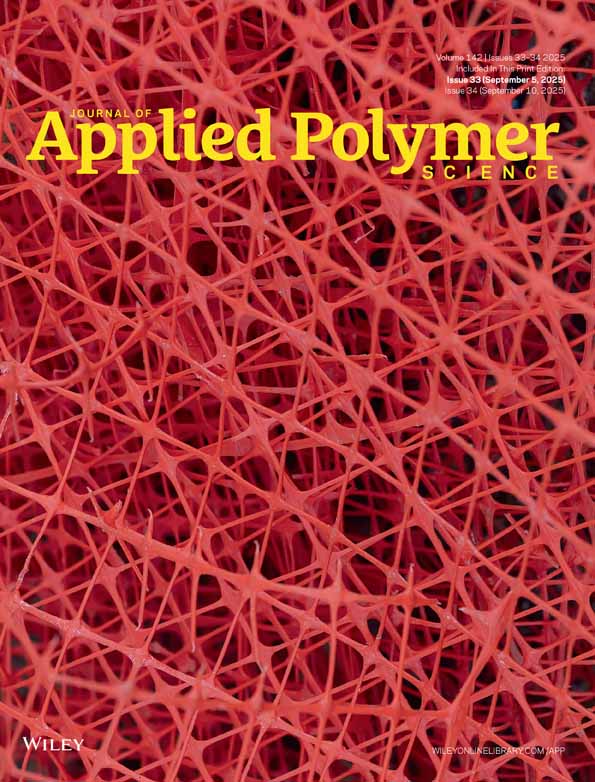Effect of the filler size and content on the thermomechanical properties of particulate aluminum nitride filled epoxy composites
Abstract
Polymer matrix composites based on brominated epoxy as the matrix and aluminum nitride (AlN) particles as the filler were prepared. The influences of the size, content, and size distribution of AlN on the thermomechanical properties, including the glass-transition temperature (Tg), coefficient of thermal expansion (CTE), dynamic storage modulus (E′), dynamic loss modulus (E″), and loss factor (tan δ), of the composites were investigated by thermomechanical analysis and dynamic mechanical analysis. There was a total change trend for Tg; that is, Tg of the composites containing nano-aluminum nitride (nano-AlN; 50 nm) was lower than that of the micro-aluminum nitride (micro-AlN; 2.3 μm) filled composites, especially at high nano-AlN contents. The Tg depression of the composites containing nano-AlN was related to the aggregation of nano-AlN and voids in the composites. On the other hand, the crosslink density of the epoxy matrix decreased for nano-AlN-filled composites, which also resulted in a Tg depression. The results also show that E′ and E″ increased, whereas tan δ and CTE of the composites decreased, with increasing the AlN content or increasing nano-AlN fraction at the same AlN content. These results indicate that increasing the interfacial areas between AlN and the epoxy matrix effectively enhanced the dynamic modulus and decreased CTE. In addition, at a fixed AlN content of 10 wt %, a low E′ of pre-Tg (before Tg temperature) and high Tg were observed at the smaller weight ratio of nano-AlN when combinations of nano-AlN plus micro-AlN were used as the filler. This may have been related to the best packing efficiency at that weight ratio when the bimodal filler was used. © 2009 Wiley Periodicals, Inc. J Appl Polym Sci, 2010




